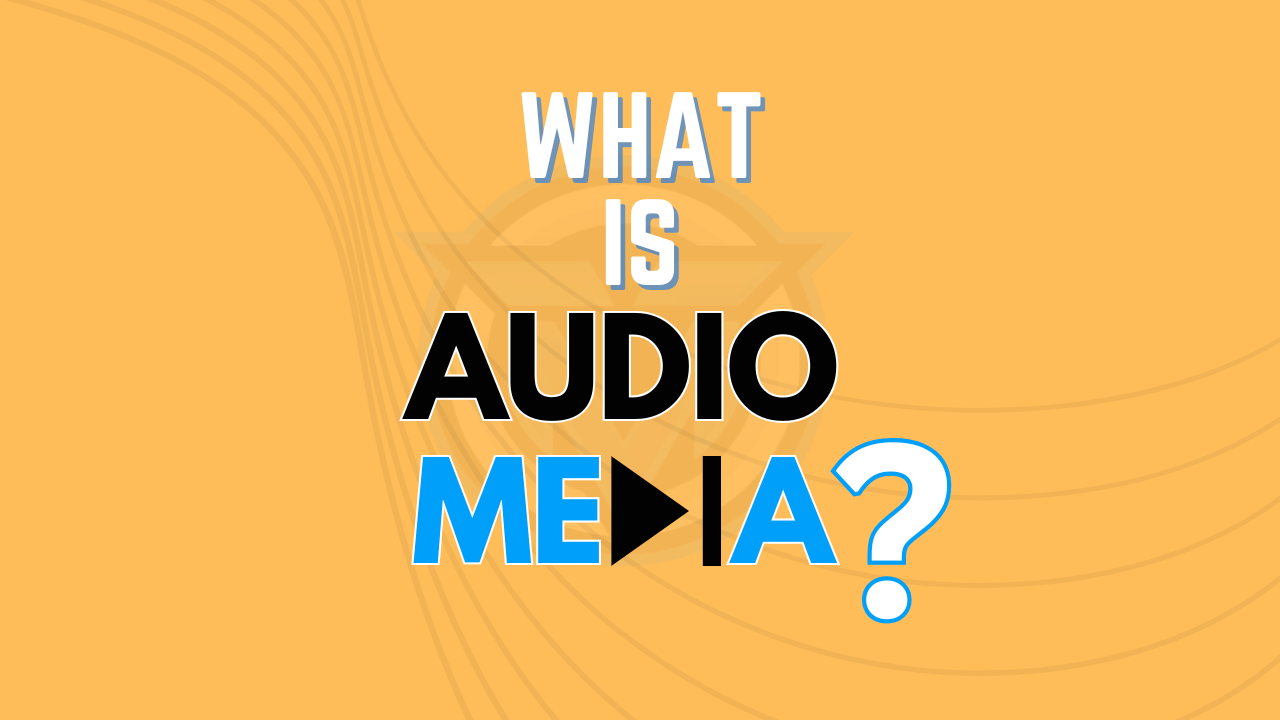In today’s dynamic digital landscape, audio media has re-emerged as a powerful tool for communication, education, entertainment, and marketing. From podcasts and audiobooks to radio and voice assistants, audio content is reshaping how people consume information and engage with the world around them.
But what exactly is audio media? How does it work, and why is it so effective in the current age of content overload? In this in-depth article, we explore everything you need to know about audio media — its definition, types, advantages, uses, and future potential.
Definition: What is Audio Media?
Audio media refers to any form of media content that is delivered through sound — specifically using voice, music, or sound effects — without the need for accompanying visuals. Unlike visual or text-based media, audio relies solely on auditory elements to convey a message, tell a story, or communicate information.
Whether it’s a live radio broadcast, a recorded podcast, or a voice note on a messaging app, the defining feature of audio media is that it engages the listener’s hearing as the primary sense.
Types of Audio Media
Audio media comes in many formats, each serving different purposes. Below are the most common types:
1. Radio
Radio is one of the oldest forms of mass audio media. It broadcasts news, music, talk shows, and advertisements to a broad audience through AM/FM or digital signals.
2. Podcasts
Podcasts are digital audio programs that users can stream or download. They cover topics like news, business, entertainment, education, and more — often with a personal, niche, or long-form format.
3. Audiobooks
Audiobooks are spoken versions of written books, often narrated by professional voice actors or the authors themselves. They’re a popular alternative to traditional reading.
4. Voice Messaging
Apps like WhatsApp, Telegram, and Facebook Messenger allow users to send short audio recordings — a convenient and personal way to communicate.
5. Music Streaming
Platforms like Spotify, Apple Music, and YouTube Music offer millions of tracks, podcasts, and artist interviews — making them a dominant force in audio content consumption.
6. Voice Assistants
Devices like Amazon Alexa, Google Assistant, and Apple’s Siri use audio media to interact with users, answer questions, play music, and control smart home devices.
7. Telephony & Voicemail
Traditional phone calls, voicemail recordings, and customer service IVR (Interactive Voice Response) systems all use audio as the primary medium of communication.
Key Features of Audio Media
- No Visuals Required – Audio media relies entirely on sound, making it suitable for multitasking or hands-free use.
- Asynchronous Consumption – Listeners can consume audio content at their convenience, making it highly flexible.
- Portable – Audio content can be listened to anywhere — in the car, at the gym, while cooking, or even during a commute.
- Personal and Intimate – Hearing someone’s voice creates a stronger emotional connection than reading text alone.
Benefits of Audio Media
1. Accessibility and Inclusivity
Audio content is accessible to people with visual impairments or reading difficulties. It also benefits individuals who learn better by listening (auditory learners).
2. Enhanced Multitasking
Audio media allows users to absorb content while doing other tasks — something that visual and text-based media can’t offer as effectively.
3. Emotional Engagement
Tone of voice, inflection, and sound effects can make audio more engaging and emotionally impactful than plain text.
4. Lower Production Costs
Compared to video or graphic-heavy content, audio media is generally less expensive to produce and requires minimal equipment.
5. SEO & Discoverability
With platforms like Google indexing podcasts and audiobooks, audio SEO (such as optimizing titles, descriptions, and transcripts) is becoming an important strategy for content visibility.
Applications of Audio Media
1. Education
Audio lectures, language learning apps, and educational podcasts have made audio media a powerful tool in e-learning and distance education.
2. Marketing & Advertising
Radio ads, branded podcasts, audio testimonials, and jingles help businesses build brand recognition and drive conversions.
3. Entertainment
From music and audiobooks to comedy shows and storytelling podcasts, audio content offers entertainment that fits into users’ busy lives.
4. Journalism & News
Many media outlets now offer audio versions of their articles or daily news digests through podcasts or audio summaries.
5. Business Communication
Audio notes, conference call recordings, and internal podcasts are helping companies communicate efficiently with remote teams.
Challenges of Audio Media
While audio has many advantages, it also has some limitations:
- No Visual Context: Complex topics may be harder to explain without images, charts, or diagrams.
- Retention Issues: Listeners may forget details more easily compared to reading or watching.
- Search Limitations: Although improving, audio content is still harder to search and categorize compared to text.
To mitigate these challenges, creators often supplement audio with show notes, transcripts, or visual assets.
Audio Media & SEO: How to Optimize
Audio content can and should be optimized for discoverability. Here are some audio SEO tips:
- Use Descriptive Titles & Tags
– Include keywords in your episode titles, file names, and descriptions. - Provide Transcripts
– Transcripts improve accessibility and boost SEO by giving search engines content to crawl. - Optimize Metadata
– Fill out ID3 tags for podcasts and music to improve indexing on platforms. - Submit to Directories
– Publish your audio on Apple Podcasts, Spotify, Google Podcasts, and YouTube to expand reach. - Leverage Backlinks
– Link to your audio content from blogs, press releases, or social media to improve authority and ranking.
The Rise of Audio Content in 2025
The consumption of audio media continues to grow rapidly. Here are a few trends shaping its future:
- Smart Speaker Integration: With more households owning voice-activated devices, audio content is becoming more interactive and widespread.
- AI Voice Synthesis: Tools like Google WaveNet and Amazon Polly are making lifelike AI-generated voices more accessible.
- Voice Search Optimization: More users are using voice to search, making it critical for brands to optimize for spoken queries.
- Short-Form Audio: Platforms like Twitter (X) and LinkedIn have experimented with short voice updates, hinting at the rise of “voice tweets” and “audio posts.”
Why Audio Media is Here to Stay
Audio media is not just a trend — it’s a timeless and evolving form of communication. In a world where time is limited and attention spans are shrinking, audio offers a flexible, engaging, and inclusive way to connect, educate, entertain, and inform.
Whether you’re a business owner, educator, marketer, or content creator, tapping into the power of audio media can help you reach broader audiences, build deeper relationships, and stay ahead in the digital age.













